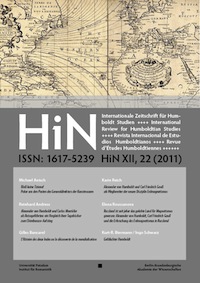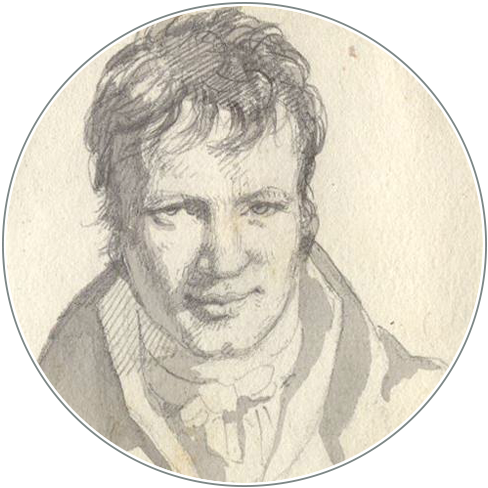Russland ist seit jeher das gelobte Land für Magnetismus gewesen: Alexander von Humboldt, Carl Friedrich Gauß und die Erforschung des Erdmagnetismus in Russland
DOI :
https://doi.org/10.18443/155Mots-clés :
Adolph Theodor Kupffer, Carl Friedrich Gauß, Erdmagnetismus, Geophysik, Observatorium, Rußland, St. PetersburgRésumé
Zusammenfassung
Wegen seiner riesigen Ausdehnung hat Russland bei der wissenschaftlichen Erforschung des Erdmagnetismus bereits im 18. Jahrhundert und erst recht im 19. Jahrhundert eine herausragende Rolle gespielt. Alexander von Humboldts Engagement auf dem Gebiet des Erdmagnetismus, sein organisatorisches und diplomatisches Geschick verhalfen dazu, dass man sich international und vielerorts dem Phänomen des Erdmagnetismus zuwandte. Carl Friedrich Gauß stellte dessen Erforschung in der relativ kurzen Zeit zwischen 1833 und 1839 auf ein ganz neues wissenschaftliches Fundament. Die Pläne Humboldts, die Erde möglichst global physikalisch zu erforschen, und die Pläne von Gauß, die erdmagnetischen Forschungen zentral zu koordinieren, gipfelten 1849 in der Gründung des Physikalischen Hauptobservatoriums in St. Petersburg, das zu jener Zeit eine absolut neuartige Institution darstellte – es war der Erforschung der neuen Disziplin Geophysik gewidmet. An der Spitze dieser Institution stand der russische Physiker Adolph Theodor Kupffer, Mitarbeiter und Kollege sowohl von Humboldt als auch von Gauß.
Abstract
Russia covers an essential part of the earth’s surface. Hence it played an exceptional role in the scientific investigation of earthmagnetism during the 18th and even more in the 19th century. Through Alexander von Humboldt’s interest in earthmagnetism and his organizational and diplomatic abilities earthmagnetism became an international phenomenon studied at many research institutions. Unlike Humboldt, Carl Friedrich Gauss established a new scientific approach. Humboldt’s aim to globally investigate the physical earth and Gauss’ idea to centralize the measurements led to the foundation of a main physical observatory in St. Petersburg in 1849, which, at its time, was a completely new institution exclusively set up for the new discipline geophysics. The head of this institution became the Russian physicist Adolph Theodor Kupffer, collaborator and colleague as well of Humboldt and of Gauss.
Téléchargements
Comment citer
Numéro
Rubrique
Licence
(c) Tous droits réservés Elena Roussanova 2011

Ce travail est disponible sous licence Creative Commons Attribution - Pas d’Utilisation Commerciale 4.0 International.
Les droits des articles envoyés restent la propriété de leurs auteurs et sont publiées sous la licence Creative Commons-Lizenz (CC BY-NC 4.0). Tous les auteurs publiant dans le HiN doivent accepter ce modèle de licence.
Les auteurs doivent eux-mêmes s’occuper de l’obtention des droits d’auteur pour les images utilisées.
Les divers éléments de la mise en page et du design de la revue sont protégés et ne peuvent être récupérés et réutilisés dans d’autres publications sans autorisation préalable de la part de HiN.










